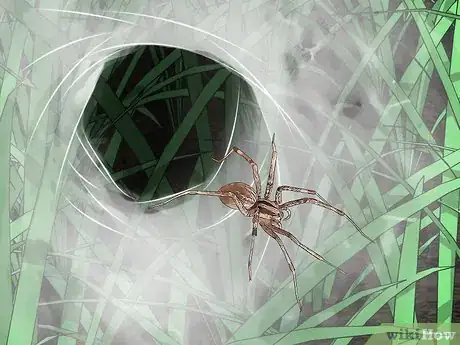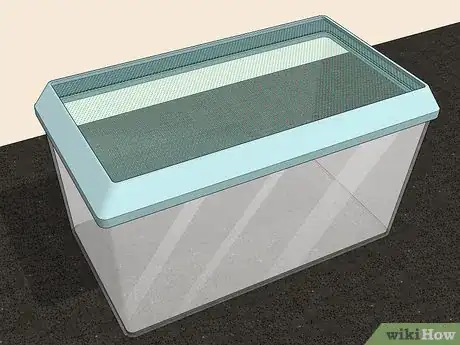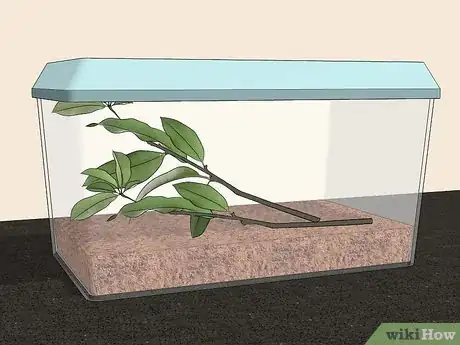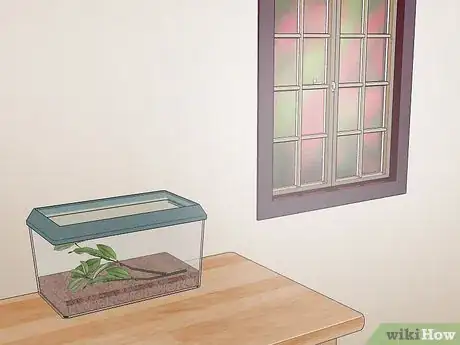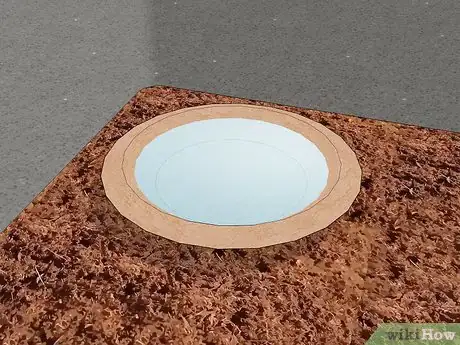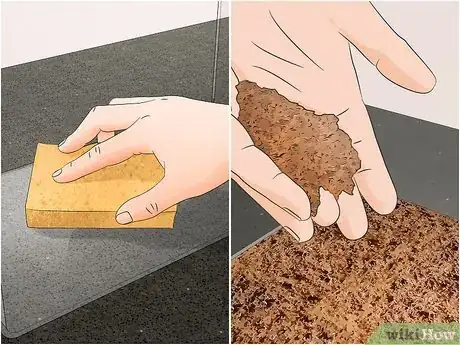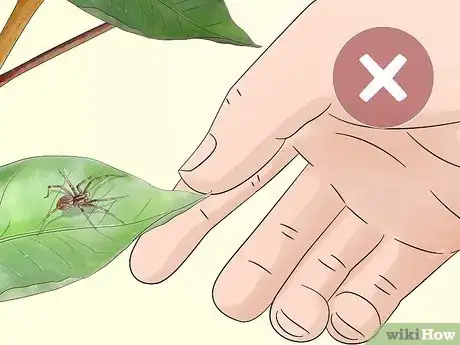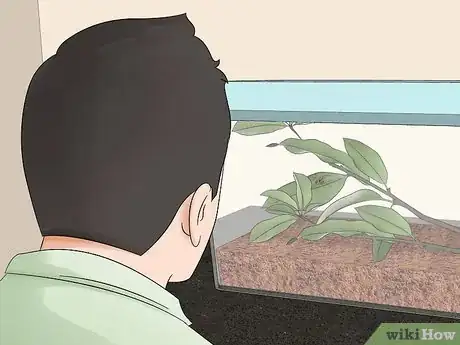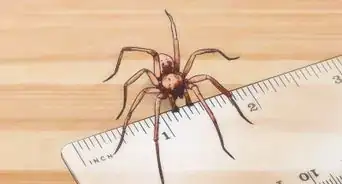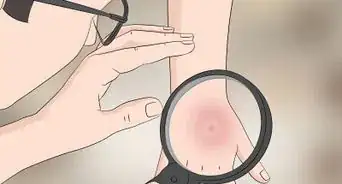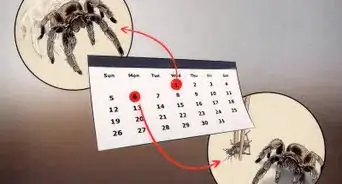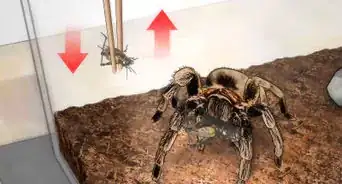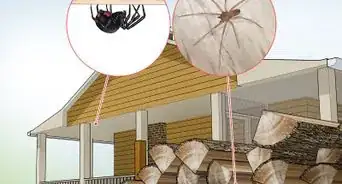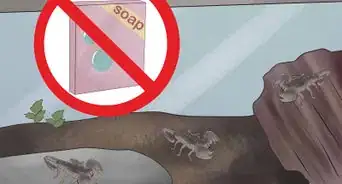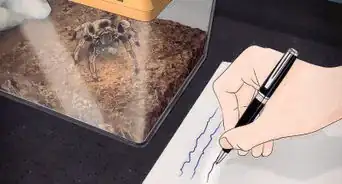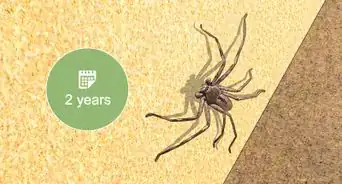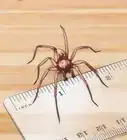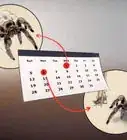wikiHow is a “wiki,” similar to Wikipedia, which means that many of our articles are co-written by multiple authors. To create this article, volunteer authors worked to edit and improve it over time.
wikiHow marks an article as reader-approved once it receives enough positive feedback. In this case, 95% of readers who voted found the article helpful, earning it our reader-approved status.
This article has been viewed 16,573 times.
Learn more...
Grass spiders, also known as Agelenopsis, are funnel weavers commonly found in the grass of your backyard. These arachnids are relatively easy to catch and can be kept in low-maintenance conditions by setting up a small enclosure. Grass spiders are great to keep and observe, and can also teach responsibility to young children looking into first-time pets. To keep grass spiders, start by knowing where and how to acquire and care for them.
Steps
Catching Grass Spiders
-
1Know where to find a grass spider. Grass spiders make funnel webs, stretching across on clusters of grass and low-growing plants. They will generally lie in the funnel part of the web.
- Grass spiders are easier to find in warmer conditions between the months of May and November.
- The web constructed by grass spiders in your lawn is not sticky. To compensate for this, the spider runs very fast.[1]
-
2Identify a grass spider. Grass spiders can grow to 19 mm in body length, with the hind spinnerets prominent and distinct. The easiest way to identify this spider is by its dark bands running on the sides of the body.[2]Advertisement
-
3Catch your grass spider. Use a transparent container and approach the web carefully. Use a flashlight to identify the spider. Grab a long stick, brush, or leaf to coax the spider out of the funnel-web.
- With one quick move, capture your grass spider. Be careful as not to damage the spider's legs when you trap it.
Tip: For best results, use a vial to capture the spider. Glass jars also work, but be sure to wash and dry them before use.
Setting Up the Enclosure
-
1Purchase a terrarium. Spider enclosures, terrariums, and aquariums can be purchase online or through your local pet store. Try to invest in a terrarium that is built for spiders and other insects. You will need a cage with a secure lid to ensure your spider doesn't escape.
- While grass spiders do not need a lot of space, depending on the species, they can grow up 19 mm in body size. Purchase a terrarium 2-3 times your spider's leg span.
- You can make your own terrarium by recycling a large jar, or other glass containers, and making air holes on the lid. The air holes should be small enough so your spider can't escape from them.
-
2Add soil, leaves, and sticks to the terrarium. Layer the bottom of the habitat with 1 inch of soil or dirt. Gather sticks and leaves from your yard to accommodate the terrarium. These items will encourage your grass spider to weave webs.
- Do not use items from your yard if they may have pesticides or dangerous chemicals on them.
- Spiders also like to hide. If your terrarium is big enough, place a halved garden pot on its side, or a piece of wood or rocks to create a hiding space.
-
3Choose a location for the terrarium. Place the terrarium on a high-surface that is stable and out of reach of household pets or children that might release your grass spider.
- Keep the terrarium out of direct sunlight. Your grass spider does not need any special lighting or temperature control, as they are used to the outdoor temperatures. However, they will overheat if they are exposed to direct sunlight.
Caring for Your Grass Spider
-
1Feed your grass spider once a week. A large cricket or 3-4 small crickets once a week is enough to sustain your spider.[3] Avoid overfeeding your spider, which can cause complications further down the line.
- You can gather various insects from your garden to feed to your grass spider; however, store-bought crickets are easiest.
-
2Set out a small dish of water. Fill a water bottle cap with water and place it in the corner of your grass spider's cage. Alternatively, spray or moisten the habitat by spritzing water once or twice a week.
-
3Clean your grass spider's terrarium if it becomes too damp or dirty. Grass spiders do not thrive in humid temperatures, so it's important to avoid spritzing the habitat with too much water.
- If mold or algae starts to grow, clean the habitat and replenish it with fresh soil, sticks, and leaves.
-
4Avoid handling your grass spider. Grass spiders are very fragile and sensitive. It's best to avoid handling these spiders, and instead, observe them. Not only this, but grass spiders are fast and can easily escape and run away, given the chance.
-
5Observe your grass spider in its habitat. Grass spiders are interesting to watch and observe. You could record their behavior and make notes about when it's most active.
Did you know?: Grass spiders are nocturnal. This means they are most active at night.
Warnings
- Grass spiders aren't dangerous or lethal, but while hunting for grass spiders, be cautious for insects that may pose as a risk.⧼thumbs_response⧽
- Avoid potting soil as substrate, as they may contain various chemicals.⧼thumbs_response⧽
- Avoid handling grass spiders, because they are quite fragile and fast. When released, they can easily get away.⧼thumbs_response⧽
